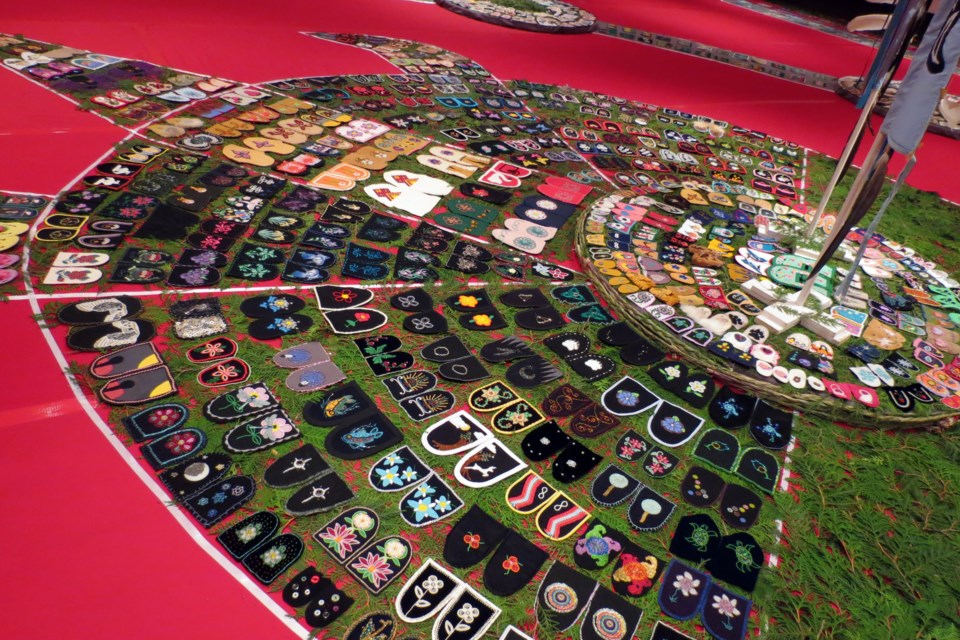Exhibiting, interpreting and collecting art is a specialized process and the Thunder Bay Art Gallery has amassed an incredible collection of art created by Indigenous artists from across the country and lead the creative world in our isolated corner of Canada.
Throughout the years, the Thunder Bay Art Gallery has stood on the campus of Confederation College, showcasing the works of established and emerging Indigenous artists from every corner of Canada.
“We work with artists from Northwestern Ontario, but we also have works from Indigenous artists from every province and territory [except for Nunavut] in our collection,” says Sharon Godwin, director of the Thunder Bay Art Gallery.
Godwin beams when discussing the new generation of local and regional Indigenous artists and watching their art catch the attention of larger institutions throughout Canada, like the Indigenous Arts Centre in Ottawa.
As the only non-profit, public art gallery in Northwestern Ontario, the Thunder Bay Art Gallery exhibits and collects art with a focus on the work of Indigenous artists, and in 2021 their exhibitions are breaking ground for up-and-coming Indigenous artists throughout all of Canada.
Inclusivity for every artist
Godwin says the Gallery approaches every show by collaborating closely with the artist and taking their lead on the presentation of the work.
“It’s important to remember that individual Indigenous artists come from different communities with unique traditions, languages and customs. Each artist we work with brings a unique history and contributes to our understanding of the richness of Indigenous cultures in this country,” she says.
When the gallery expanded in the early 1980s, the work of Indigenous artists was often still relegated to historical museums. The Thunder Bay Art Gallery was one of the first in the country to focus on the work being produced as important art.
Because of their focus on contemporary Indigenous art, they now have a collection of more than 1,600 works of art and have curated shows for such notable names as Roy Thomas, Christi Belcourt, Ahmoo Angeconeb and Alex Janvier.
One such notable show was Walking with Our Sisters.
“The Gallery provided a space for this memorial project, and work for over a year with a local planning committee of Elders, artists and community representatives. Over 800 pairs of moccasin vamps were created by friends and family in memory of the many murdered and missing Indigenous women and girls in Canada. It was life changing for many in the community, and eye-opening for non-Indigenous people,” Godwin says.
This year, post-lockdown, the gallery is presenting two exhibitions, Piitwewetam: Making Is Medicine and Dakobinaawaswaan (Baby in a Cradleboard), both curated by local Indigenous artists, opening doors for young artists to have even more opportunities in the world of art within Thunder Bay.
Creating and curating for the future
Even though gazing at art in-person is on hold for our safety, the gallery has been creating virtual experiences for those, young and old, wanting to stay in-the-loop with their programs.
With virtual field trips for schools and virtual studio visits with their new curator, Penelope Smart, the gallery has stayed ahead of this new normal for everyone discovering how valuable art is.
“We have had to accelerate this new way of working and we see many positive aspects of digital engagement that we’ll adopt and add the way we work moving forward,” Godwin notes.
She’s excited about the future and the change the world has created for the art community. More people are buying from local artists and supporting Indigenous creators, in and outside of the gallery.
With a new space being built on the waterfront, the Thunder Bay Art Gallery is continuing to create spaces for Indigenous and non-Indigenous artists and after 45 years of operating, the future is nothing but promising.
People know that the arts are important and a result of the pandemic is a genuine awakening to the value of art and those who create it.



